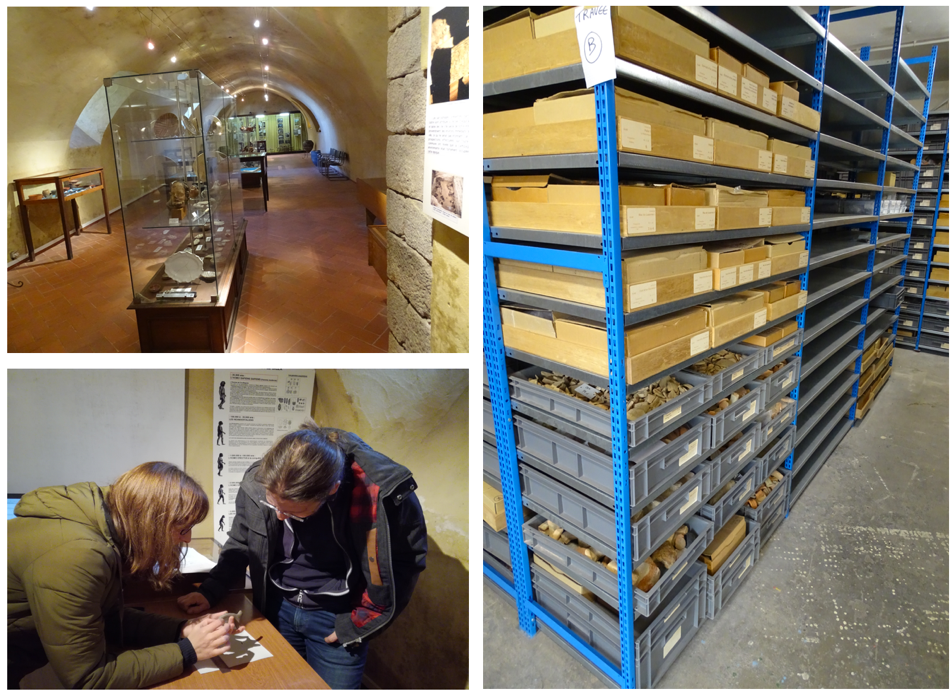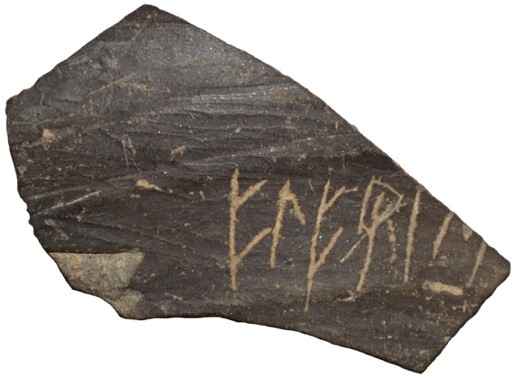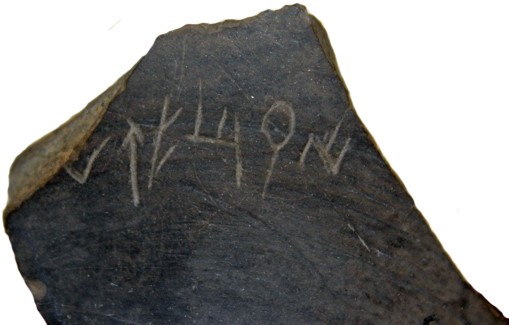By Noemí Moncunill Martí
In December I had the chance to travel to the beautiful town of Elne, in southern France, in order to study its interesting corpus of inscriptions, together with Jérôme Bénézet, archaeologist in the «Service Archéologique du Département des Pyrénées-Orientales».

Research work carried out at the museum and archaeological warehouses of Elne.
Located between the Pyrenees and the Mediterranean Sea, on the Roussillon plain, Elne has been a land of passage and meeting point for different cultures since ancient times. Proof of this is the variety of its epigraphic record, including some inscriptions in Greek and Latin, but especially in the local language(s), Iberian and maybe as well Gaulish. As a matter of fact, the local identity of the ancient inhabitants of this area has long been discussed and it is still the subject of controversy among specialists: while some scholars think that Iberian was the vernacular language of this region –and Iberians its peoples–, others consider this language was merely used as a lingua franca to facilitate commercial interactions with the Iberian Peninsula. Be it as it may, the study of the sources directly written by the inhabitants of Elne from the 4th century BC till the Roman period remains an essential element in order to understand the cultural and linguistic substrate of the region along with its evolution till the final Latinization.


Pictures showing two different graffiti from Elne, both of them written in Iberian script. Whereas the first bears an Iberian name, Elerbas, the second, which reads ]nuetiri, might be interpreted as the Iberian adaptation of a Gaulish anthroponym Con-uectirix.
The epigraphic mission is part of one of the main Work Packages of the LatinNow project, “Documenting the Provinces”, aimed at gathering data and materials which are relevant for the study of Latinization in the north-western provinces. In this case, we have carried out the revision of the whole corpus of inscriptions of the site and we are currently working on the interpretation of these texts, with a special focus on the cultural environment in which they were produced. To this end, the linguistic analysis will be put together with the archaeological contextualization of the finds and the study of the writing materials, which will allow us to progress on the dating of the inscriptions and the social contextualization of the writing practices in ancient Elne.